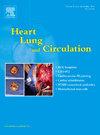A Systematic Review of Minimally Invasive Approaches to Surgical Atrial Septal Defect Repair
IF 2.2
4区 医学
Q2 CARDIAC & CARDIOVASCULAR SYSTEMS
引用次数: 0
Abstract
Aim
Atrial septal defects (ASD) are the most common congenital cardiac malformations. Over the preceding decades, a host of minimally invasive and interventional techniques for ASD closure have emerged. Minimally invasive ASD (MIASD) repair utilises thoracotomies, endoscopic, robotic, and even beating heart approaches to facilitate MIASD repair. We performed a systematic review to summarise the literature describing the outcomes of patients following MIASD repair.
Method
PubMed, Medline, and Scopus were searched by two authors for manuscripts describing outcomes following MIASD repair. Overall, 1,972 titles were screened, 1,945 were excluded, and 27 were included in the review. The primary outcome was mortality and secondary outcomes included postoperative morbidity.
Results
Measures of mortality were largely limited to 30 days postoperatively, with 0% mortality reported for MIASD up to 30 days. Rates of postoperative morbidity were low in both sternotomy and MIASD groups, with no consistent differences identified. Rates of intensive care unit and hospital stay were consistently reported to be lower with MIASD than with the conventional approach.
Conclusions
MIASD repairs have continued to evolve and improve. Among the various approaches to MIASD repair, all have been associated with low rates of morbidity and mortality. Surgical ASD repair continues to be versatile, allowing for repair of all manner of ASDs, and allowing for the concomitant management of other cardiac conditions. Regular advancements in this field, including the optimisation and development of surgical techniques with regular evaluation of patient outcomes, will ensure appropriate patient selection and optimisation of outcomes for patients with ASD.
微创房间隔缺损手术修复的系统综述。
目的:房间隔缺损是最常见的先天性心脏畸形。在过去的几十年里,出现了许多ASD闭合的微创和介入性技术。微创ASD (MIASD)修复利用开胸手术,内窥镜,机器人,甚至心脏跳动的方法来促进MIASD修复。我们进行了一项系统回顾,总结了描述MIASD修复后患者预后的文献。方法:由两位作者检索PubMed, Medline和Scopus,以获取描述MIASD修复后结果的手稿。总的来说,1972篇文献被筛选,1945篇被排除,27篇被纳入综述。主要结局是死亡率,次要结局包括术后发病率。结果:死亡率的测量主要限于术后30天,30天内MIASD的死亡率为0%。胸骨切开术组和MIASD组的术后发病率都很低,没有一致的差异。据报道,与传统方法相比,MIASD的重症监护病房和住院率一直较低。结论:MIASD的修复一直在不断发展和改进。在各种修复MIASD的方法中,所有方法的发病率和死亡率都很低。外科ASD修复仍然是多用途的,允许修复所有形式的ASD,并允许其他心脏疾病的伴随治疗。这一领域的定期进步,包括优化和发展手术技术,定期评估患者的预后,将确保适当的患者选择和优化ASD患者的预后。
本文章由计算机程序翻译,如有差异,请以英文原文为准。
求助全文
约1分钟内获得全文
求助全文
来源期刊

Heart, Lung and Circulation
CARDIAC & CARDIOVASCULAR SYSTEMS-
CiteScore
4.50
自引率
3.80%
发文量
912
审稿时长
11.9 weeks
期刊介绍:
Heart, Lung and Circulation publishes articles integrating clinical and research activities in the fields of basic cardiovascular science, clinical cardiology and cardiac surgery, with a focus on emerging issues in cardiovascular disease. The journal promotes multidisciplinary dialogue between cardiologists, cardiothoracic surgeons, cardio-pulmonary physicians and cardiovascular scientists.
 求助内容:
求助内容: 应助结果提醒方式:
应助结果提醒方式:


